|
|
Post by Admin on Mar 9, 2019 18:23:39 GMT
 Anatomically modern humans (AMH) initially migrated into east Eurasia prior to 65–50 kya1,2,3,4,5,6, yet the details of migration routes and subsequent population histories have been arguable, now clarified through cranio-morphometric studies in coordination with archaeological evidence. Among the most crucial issues to consider, one set of questions pertains to the debates between a Single Wave Model7 versus the variants of a Multiple Waves Model6,8,9,10,11 of AMH radiating outward from Africa, with further implications about how those ancient groups could relate with modern-day populations. Another set of issues has involved the role of farming economies in driving demographic movements and overlays of population histories during the last several thousands of years, wherein the newest cranio-morphometric studies and archaeological findings can point to at least two layers of populations. Regarding the initial appearance of AMH in east Eurasia, the large-scale cross-regional evidence so far suggests two major groupings, in southern and northern areas, although ultimately they may have derived from a shared ancestry prior to 65–50 kya. On the southern side of east Eurasia, the initial AMH occupants migrated simultaneously into Southeast Asia (SEA) and the ancient Pleistocene continent of Sahul8,12,13. On the northern side, the AMH who reached Northeast Asia (NEA) further dispersed into the American continents through the strait of Beringia during the last glacial age14,15,16,17. These scenarios could be consistent with interpretations of the Single Wave Model or Multiple Waves Model. The picture likely was complicated, granted the growing evidence of numerous localized variations and intermixtures when AMH populations met with Neanderthals and Denisovans18,19. 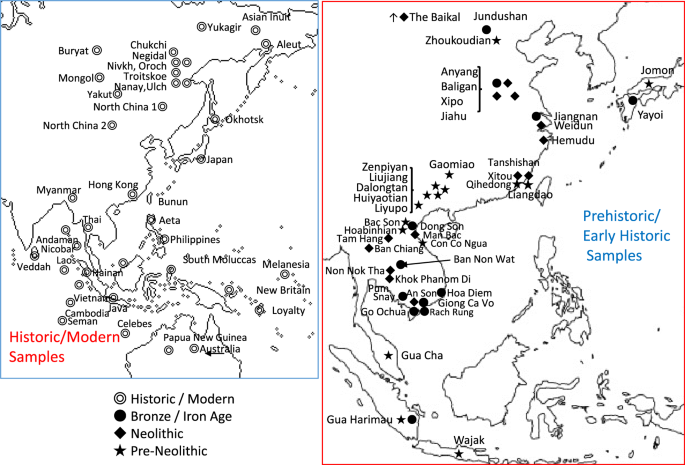 Figure 1 Major influences in population histories can be attributed to the origins and developments of farming societies, involving a number of movements over the course of some thousands of years. Dating at least 9 kya, archaeological investigations have shown how rice and millet farming had emerged first in the Yellow and Yangtze River areas of China, eventually leading to variable outcomes throughout east Eurasia and into Island SEA after 4 kya20,21,22. In parallel with the archaeological evidence, linguistic studies refer to the movements of Austronesian and Austroasiatic language families, linked with contexts of ancient rice and millet farming societies23,24,25,26,27,28. Given the time depth of the agricultural influence in east Eurasia, the effects in population movements must have been imposed on the pre-existing demography of AMH groups. The details could be remarkably complicated, yet potentially they can be clarified through direct studies of the ancient skeletal remains from the relevant archaeological sites. The pre-farming and post-farming contexts have disclosed objectively different assemblages of artifacts, food remains, house structures, burial practice, and other aspects of material archaeological signatures that may be coordinated with physical anthropological observations such as in cranio-morphometric studies. Two major populations are discerned in the cranial affinities, as expressed through analysis of Q-mode correlation coefficients, based on 16 cranio-morphometric datasets recorded from a total of 89 population samples (Fig. 1, Tables 1 and 2, see Materials and Method section). The results are depicted in a Neighbor Net Split map (Fig. 2), here termed the ‘Phoenix’ tree, due to the shape reminiscent of the mythical bird with large wings.  Figure 2 The ‘Phoenix’ tree shows a straightforward dichotomization in two major clusters. (1) The ‘head’ cluster (upper left side) includes Northeast and East Asians (blue circle), as well as Southeast Asians, for the most part referring to early farming and later populations. (2). The ‘tail’ (lower right side) cluster includes Australo–Papuans and late Pleistocene/early Holocene East/Southeast Asians (red circle), strongly corresponding with pre-farming and Hoabinhian contexts. Within the overall clustering patterns, naturally some overlap or exchange can be seen in a closer examination, as an expected outcome of small-scale admixture. For example, the data points for Austroasiatic-speaking farmers are branched from the East Asian cluster, slightly toward the side of the red circle cluster that primarily would refer to Australo-Papuan groups. Similarly, the sub-cluster for Austronesian-speaking groups in Island SEA deviates somewhat from the East Asian cluster and instead branches toward the Australo-Papuan affinity. Deviating from the Australo-Papuan cluster, a few samples such as from Gaomiao, Zengpiyan, and the Andaman Islands appear to share a slight affinity with the NEA populations. |
|
|
|
Post by Admin on Mar 10, 2019 18:38:39 GMT
Discussion We documented a continuation of the “first layer” AMH in southern China on the basis of hunter-gatherer sites that were dated between ca. 14 kya and 5 kya (Fig. 2). These study sites included Dalongtan, Zengpiyan, Huiyaotian, and Liyupo in Guangxi Province, Gaomiao in Hunan Province, Qihedong in Fujian Province, and Liangdao in the Taiwan Strait. Although some site contexts within this group chronologically coincided with the earliest known rice and millet farming in Yellow and Yangtze River regions, hunter-gatherer groups still had occupied southern areas. From those hunter-gatherer sites, diagnostic features of skeletal remains included the presence of dolichocephalic calvaria, large zygomatic bones, remarkably prominent glabellae and superciliary arches, concave nasal roots, and low and wide faces1,29,30,31,32,33,34,35. Notably, ancient Japanese Jomon hunter-gatherers belonged to this same grouping. In addition to the samples from China, pre-Neolithic SEA hunter-gatherer groups were represented in this analysis mostly by archaeological samples from cave sites that contained pebble-tool complex of “Hoabinhian” associations36,37,38. Our Phoenix map (Fig. 2) reveals that all of the analyzed Hoabinhian remains from Vietnam and Malaysia shared cranial characteristics with Australo-Papuans. These traits were retained into later post-Hoabinhian hunter-gatherer contexts, including the shell midden site of Con Co Ngua (Vietnam), dated around 6.5 kya39. Likewise, the remains of hunter-gatherers recovered from the ca. 5 kya Gua Harimau site (Sumatra, Indonesia) share close affinities with Australo-Papuans40. The “second layer” population identified in this study is associated with present-day NEA people, including all Siberian ethnic groups. The tight clustering of cranial morphologies reflects strong inter-group homogeneity that can be explained most parsimoniously via the single shared origin of a flat and long face and comparatively short head. These definitive characteristics may have originated among people who lived in cold conditions and adapted by reducing their total body surface. 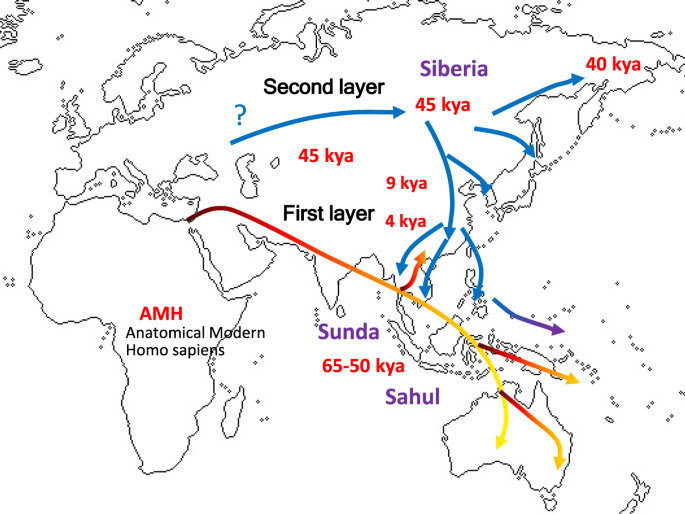 Figure 3 The early hunter-gatherer communities gave way to populations with northern morphometric affinities, seen at Neolithic and Bronze-Iron Age population samples in eastern Eurasia. The prevailing hypothesis for the origin of the “second layer” and the spread of its descendants across much of East Asia and SEA implies a key role for rice and millet agriculture in China in promoting population growth and expansion. Such farming traditions now are traced confidently to 9 kya within the Yellow and Yangtze River area21,22,23. Between 7 kya and 5 kya, rice and millet agriculture supported a number of large settlements encompassing an expanding geographical range across China, and several of the resident groups developed complex social, political, economic, and religious systems22,23. The early Chinese farming groups represented here from the archaeological sites of Jiahu, Baligan, Xipo (Henan Province), Hemudu, Weidun (Zhejiang Province), Xitou, and Tanshishan (Fujian Province) all exhibit close affinities with their NEA Siberian counterparts (Fig. 2). With these results, we infer that the “second layer” of population was associated with the earliest occurrences of farming in this region. Moreover, we interpret that the “second layer” of population had been affected by NEA-associated gene flow from the north, demonstrably differentiated from pre-existing Australo-Papuan traits seen in our older Chinese and SEA samples. Previous research utilizing archaeological evidence and language history has demonstrated that a remarkable cultural transition took place in SEA between 4.5 and 4 kya24,25,26,27. This conclusion now is reinforced by the “second layer” identified here on the basis of skeletal remains, specifically from the sites of Man Bac and An Son (Vietnam), Tam Hang (Laos), and Ban Chiang, Khok Phanom Di, Ban Non Wat, and Non Nok Tha (Thailand) (Fig. 2). This cross-regional archaeological signature reflects the geographic expansion of a “Neolithic” horizon of advanced pottery and stone tool traditions, farming economies, and residential settlement structures that can be traced ultimately to the Yangtze River Valley (e.g. Hemudu in Zhejiang Province in Fig. 2) before it had spread through southern China, Mainland and Island SEA, Taiwan, and eventually into Pacific Oceania. 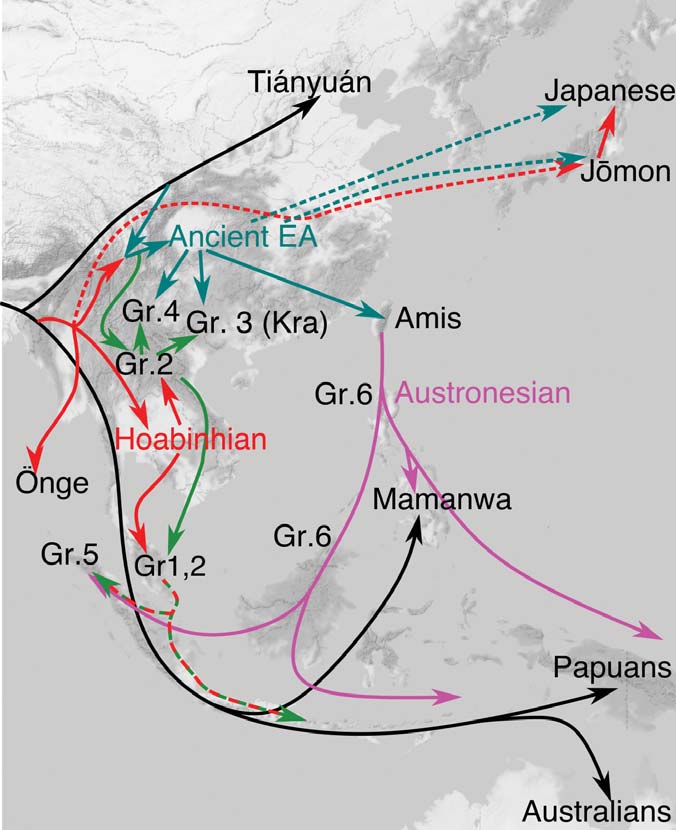 In terms of the deeper origins of the apparently homogenous NEA population, we may consider the more ancient homelands and migratory routes, prior to the entrance into the Yellow and Yangtze River areas by 9 kya but potentially much earlier. In one possible scenario, ancient people perhaps of the “first layer” with Australo-Papuan features moved into Siberia and subsequently adapted to the extremely cold climate during the Last Glacial Maximum (LGM) of 24– 16 kya. Another possibility may have involved a Western Asia or European origin, wherein people migrated from western to eastern Siberia across northern Eurasia. In any case, this issue is unresolved, because the ancestral morphology of NEA people so far has been undefined in the scarce skeletal material from the Pleistocene of Siberia. In the Siberian regional samples, so far not enough cranial measurements can refer to the ancient periods pre-dating the cold climate adaptations such as facial flattening. Until these and other issues can be resolved, our study cannot expand to compare substantively with similar-age cranial data from the western hemisphere. Among the few known pre-40 kya Siberian AMH samples, the DNA analysis of the Ust’-Ishim specimen dated to 45 kya offered a high-quality genome sequence19, wherein this AMH individual derived from the basal population of northern Eurasia. This individual had shared ancestors in common with present-day east Eurasian populations and pre-farming west Eurasian populations, with a trace of Neanderthal gene. Another DNA analysis has been possible with the 40 kya AMH in Tianyuan Cave near Beijing47, revealing a close genetic relationship with present-day East Asians and evidently different from the diagnostic DNA markers in current European people, therefore suggesting a divergence between European and Asian populations at least in this case. Interpretations may yet be modified with future findings in more cross-regional samples from these ancient time frames. The results of this study are congruent with the archaeological signature of a geographic expansion of “Neolithic” groups, as an added layer flowing through pre-existing populations. In our particular study case, the “second layer” groups can be defined not only by their cranio-morphometric features but also by their pottery traditions, extended-position burials, residential settlements, and farming economies. These groups brought Austroasiatic languages to the mainland and Austronesian languages to the islands from Taiwan southward. Independently confirming our interpretation, other studies of ancient genome analysis43,44,49 and nonmetric dental traits42,50 have demonstrated the rapid contribution of NEA genes into SEA, explained by large-scale population expansions of farming groups. Scientific Reports volume 9, Article number: 1451 (2019) |
|
|
|
Post by Admin on May 13, 2019 18:10:13 GMT
Since its discovery in 2010, we’ve heard claims that the fossil hominid species Australopithecus sediba is a likely ancestor of our genus Homo. Some paleoanthropologists quickly criticized those claims because sediba postdates the earliest known fossils belonging to Homo. The chronological quandary is not small, as A. sediba is about 800,000 years younger than the first known specimen of its supposed descendant, early Homo. 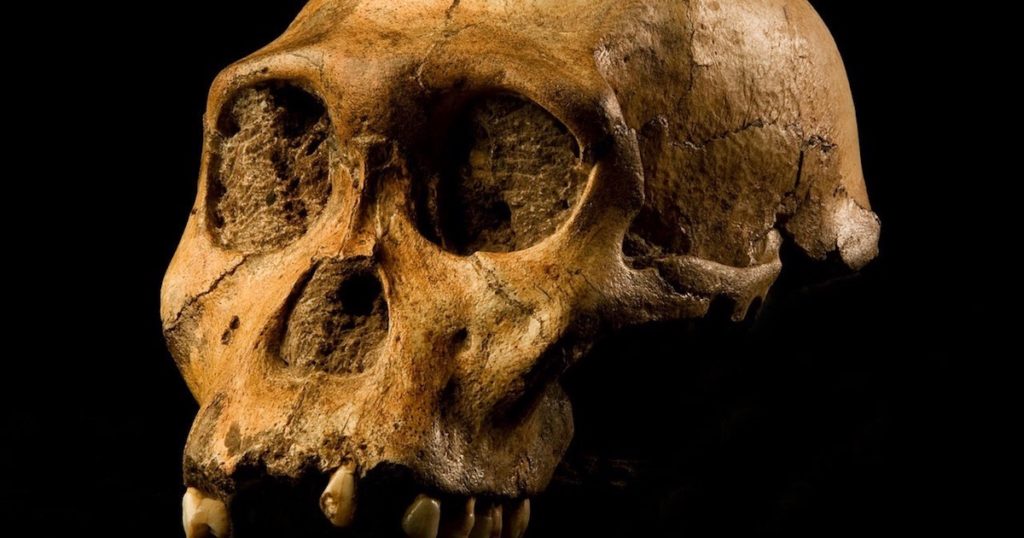 For proponents of sediba, however, this objection didn’t matter much. After all,one can always invent “ghost lineages” — spans of time for which a species existed, but isn’t found due to the incompleteness of the fossil record. For example, when a 2.8 million year old jaw bone was discovered belonging to Homo, sediba-advocates fell back to the old incompleteness argument: “The idea that [the new jaw] makes anything else unlikely to be an ancestor is ludicrous,” says [Fred Grine at Stony Brook University]. “That would pretend that the fossil record is complete. And we know it can’t be, since they just discovered something that wasn’t there before.” 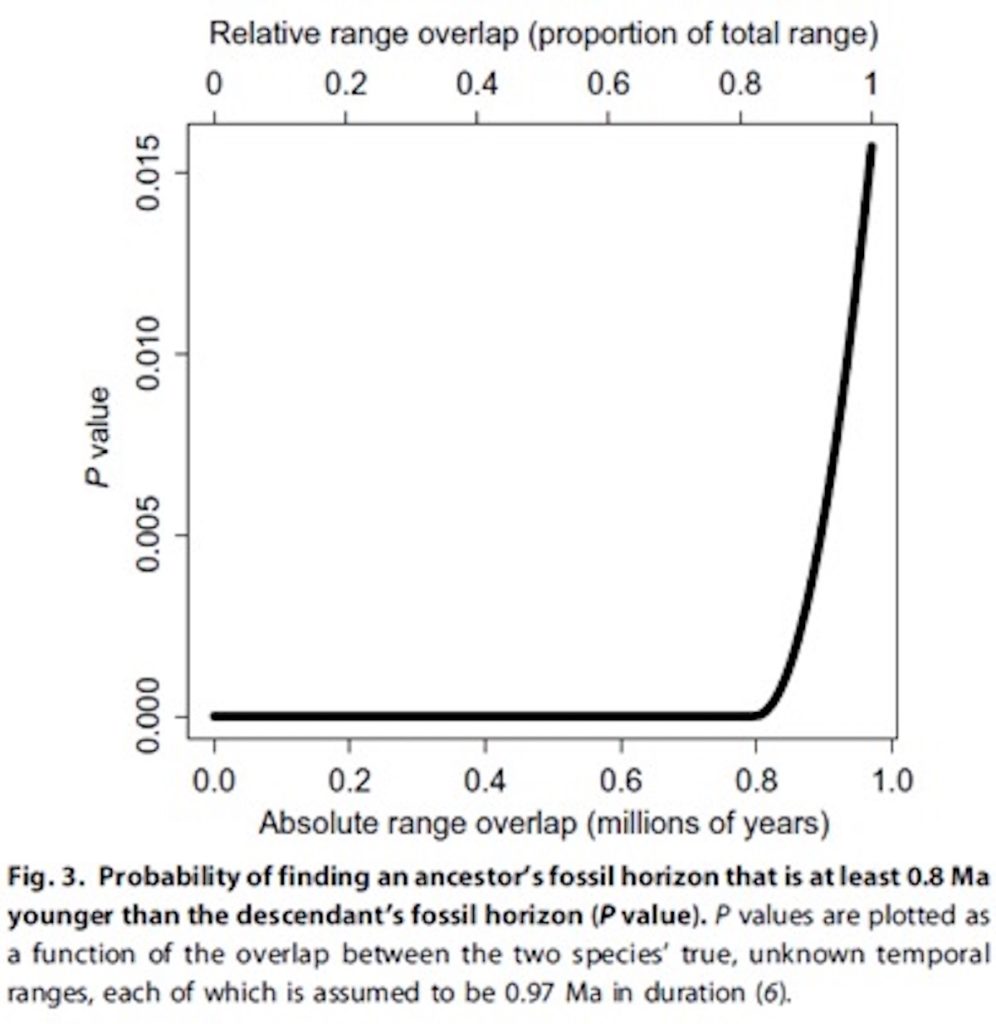 They attempt to answer question about the degree of overlap by noting that the average hominin species exists for 0.97 million years. If we assume that (a) A. sediba is ancestral to early Homo, (b) both A. sediba and early Homo existed for 0.97 million years, and (c) there was 100 percent overlap of their temporal ranges — an assumption they note “is impossible for ancestor-descendant species” but is calculated so we can determine the maximum likelihood of finding sediba 800,000 years after Homo — then the maximum probability of finding the first appearance of A. sediba so long after the first appearance of Homo is 0.016. Under any typical statistical analysis, that refutes your null hypothesis that sediba is ancestral to Homo. The authors add more empirical data to improve their calculation. They consider the broader hominid fossil record, and observe that there is only one clear-cut case where a supposed ancestor species postdates a descendant species — but in that case the age difference is only 100,000 years. By creating a histogram of the relative timing of the first appearance of 28 presumed ancestor and descendant species, and fitting a bell curve to that histogram, they find that the likelihood that A. sediba would appear 800,000 years after early Homo, if it in fact were ancestral to early Homo, is “less than 0.001.”  Here’s an interesting question we can now consider: Some folks have claimed that Homo naledi was ancestral to other early forms of Homo, even though geological dates on H. naledi fossils now show it lived only about 300,000 years ago. Given that early Homo first appears 2.8 million years ago, what is the probability that H. naledi is an ancestor of early Homo in light of the chart above? The time discrepancy would be about 2.5 million years, but their curve only goes out to 1 million years. So naledi’s time gap is literally off the chart. But get ready for a very tiny probability with a lot of zeros after the decimal! Given the slipperiness of cladistics, it’s not every day that we see evolutionists arguing that we can falsify a species as an ancestor of another species simply because it appears in the wrong time range. When the branching order conflicts with chronology, most cladists will simply appeal (whether explicitly or implicitly) to ghost lineages and assume that morphology reigns and chronology is irrelevant. But chronology isn’t irrelevant, because, as noted, a parent can never be younger than its child! This innovative statistical approach makes for a nice case-closed argument against their cladistics-bias, as one of the authors was quoted saying: One can disagree about morphology and the different features of a fossil, but the level of confidence we can put in the mathematical and statistical analyses of the chronological data in this paper makes our argument a very strong one. |
|
|
|
Post by Admin on May 22, 2019 18:16:04 GMT
Sometime around 2 million years ago, a group of bipedal hominins in Eastern Africa gradually evolved into something that looked and acted enough like us to be part of our genus, Homo. This was an important moment in the evolutionary history of our species, but paleoanthropologists aren’t sure yet exactly which species actually gave rise to our branch of the hominin family tree. A new study, however, suggests that we can probably rule out one of the contenders. 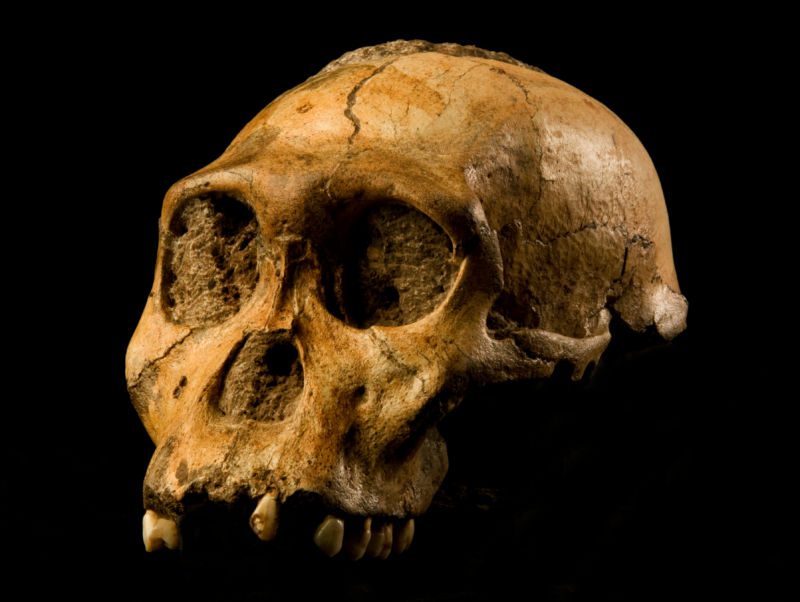 The top contenders include a species called Australopithecus sediba, known from the fossilized remains of two adults and four children who apparently fell to their deaths in Malapa Cave around 1.9 million years ago. The other top contender is called A. afarensis, best known from the 3.2-million-year-old skeleton nicknamed Lucy and a set of preserved footprints near Laetoli, Tanzania.  Both species walked on two legs and probably made stone tools, but their shoulders, arms, and hands were also still built for climbing trees. So which species is actually our ancestor, and which is just a distant cousin? “Knowing which species gave rise to Homo is important in its own right,” University of Chicago Paleoanthropologist Andrew Du told Ars Technica. “That is, it directly addresses the question of where we came from, which is of interest to all humans.” Understanding which species produced our lineage, and when and where that happened, could tell us some important things about the environments, selective pressures, and adaptive abilities that shaped us.  Some paleoanthropologists argue that’s what happened with A. sediba and the first members of Homo. The only known fossils of A. sediba came from a 1.97 million-year-old layer of rock at a single site at Malapa, South Africa—about 0.8 million years younger than the earliest fossil that seems to clearly fit into our genus, Homo (a 2.8 million-year-old jawbone). While it’s technically possible for evolution to create this pattern, is it actually likely? If you put a bunch of fossils in a bag and start pulling them out at random, what are the odds that the first fossil you would draw from one species would be 800,000 years younger than the first fossils of a species that “budded” from it? That’s the question Du and co-author Zeresenay Alemseged put to the test.  They turned to the hominin fossil record and plotted the ages of the first fossils discovered from 28 pairs of species and their descendants. It’s worth mentioning that the first fossil from the ancestor species was older than the first fossil from the descendant species in just one case: Homo erectus and its proposed descendant H. antecessor. The gap there was only about 0.1 million to 0.2 million years. In fact, Du and Alemseged calculated that, if a species lived for roughly 0.97 million years (an average calculated by a 2016 study), the odds of a fossil specimen being 0.8 million years younger than its alleged descendant were about 0.9 percent. If you’re a statistics buff, that means that if you plot the observed difference in age between fossils on a bell curve, the 0.8-million-year gap between A. sediba and the earliest Homo is hanging out on the far right tail of the curve. While it’s still technically possible for A. sediba to be the proud ancestor of our genus, it’s really, really unlikely, according to Du and Alemseged. |
|
|
|
Post by Admin on May 23, 2019 18:00:42 GMT
Understanding the origin of the genus Homo is one of paleoanthropology’s most enduring questions. A key element in resolving this question is determining which species may have been ancestral to our genus. Because Australopithecus sediba has recently been proposed as a candidate ancestral species (1–3), it is essential that we critically evaluate this claim. Fossil specimens from A. sediba are currently only known from Malapa, South Africa, which is dated to 1.977 million years (Ma) ago (2). These fossils postdate by 800,000 years (0.8 Ma) the only known specimen from the oldest, and currently unnamed, species of Homo (hereafter, “earliest Homo”), which is dated to 2.8 to 2.75 Ma ago at Ledi-Geraru, Ethiopia (4, 5). Most recently, the argument for A. sediba being ancestral to Homo was continued by Robinson et al. (6), who discussed how a fossil horizon from an ancestral species could be much younger than a horizon from the descendant and claimed, “On temporal grounds alone one cannot dismiss the possibility that A. sediba could be ancestral to the genus Homo” (p. 1).  Fig. 1 Conditions where an ancestor’s fossil horizon can be younger than the descendant’s. Two conditions must both be met for A. sediba to be ancestral to Homo and for the recovery of an A. sediba fossil horizon that is much younger than an earliest Homo horizon (barring severe postdepositional stratigraphic mixing or errors in taxonomic assignment or dating): (i) Because an ancestor’s fossil horizon can only postdate a descendant’s if there is some overlap in the species’ temporal ranges (Fig. 1A), the descendant must have speciated from the ancestor via budding cladogenesis (Fig. 1B). For our study, we assume that Homo cladogenetically budded from A. sediba because, otherwise, this analysis would be unnecessary, and the argument for A. sediba being ancestral to Homo would be illogical (because the A. sediba fossil horizon postdates the earliest Homo horizon). (ii) Given the large amount of time separating the fossil horizons of A. sediba and earliest Homo, there must have been substantial overlap between the two species’ temporal ranges, such that the end of the A. sediba range is able to postdate the beginning of the earliest Homo range by at least 0.8 Ma (Fig. 2). If range overlap is less than 0.8 Ma, then the A. sediba fossil horizon cannot be 0.8 Ma younger than the earliest Homo horizon (assuming A. sediba was ancestral to Homo) (Figs. 1A and 2). As range overlap increases, so does the probability of sampling the end and beginning of the A. sediba and earliest Homo ranges, respectively, such that their horizons are at least 0.8 Ma apart (Fig. 2A). This second condition forms the theoretical basis for our probability model.  Fig. 2 Schematic used to derive the model for quantifying the probability that an ancestor’s fossil horizon postdates the descendant’s by at least 0.8 Ma. While Robinson et al. (6) are correct that it is possible for an ancestor’s fossil horizon to be much younger than the descendant’s, a more informative question would be, “How likely is this chronological pattern?” We build upon previous work concerning the evolutionary relationships of A. sediba (1–3, 6) and construct a probability model, which serves as a null hypothesis test, to evaluate whether A. sediba is ancestral to Homo. We assume that (i) A. sediba and earliest Homo each had temporal ranges of 0.97 Ma (6), (ii) the probability of recovering fossils throughout each species’ range is uniform through time (7, 8), and (iii) the probability of sampling an A. sediba fossil horizon does not affect the probability of sampling an earliest Homo fossil horizon, i.e., these are independent events (see Materials and Methods). From these assumptions, we quantify the probability of finding one fossil horizon from A. sediba that is at least 0.8 Ma younger than one horizon from earliest Homo (i.e., the observed data), assuming A. sediba is ancestral to Homo (i.e., the null hypothesis). The computed probabilities are equivalent to P values, and if they are exceptionally low, this would suggest that A. sediba is unlikely to be the ancestor of Homo (i.e., the null hypothesis is falsified). We calculate multiple P values as a function of the overlap between the two species’ true temporal ranges, which is currently unknown. We analyze temporal evidence only (6) and do not consider morphological data concerning the evolutionary relationship between A. sediba and Homo (1, 9–11). We also analyze the historical record of hominin discovery and calculate the geological age difference between initial fossil discoveries in purported ancestor and descendant species. The aim here is to corroborate our theoretical probability results and to empirically assess how likely it is for an ancestor’s fossil horizon to postdate a descendant’s by at least 0.8 Ma. |
|














